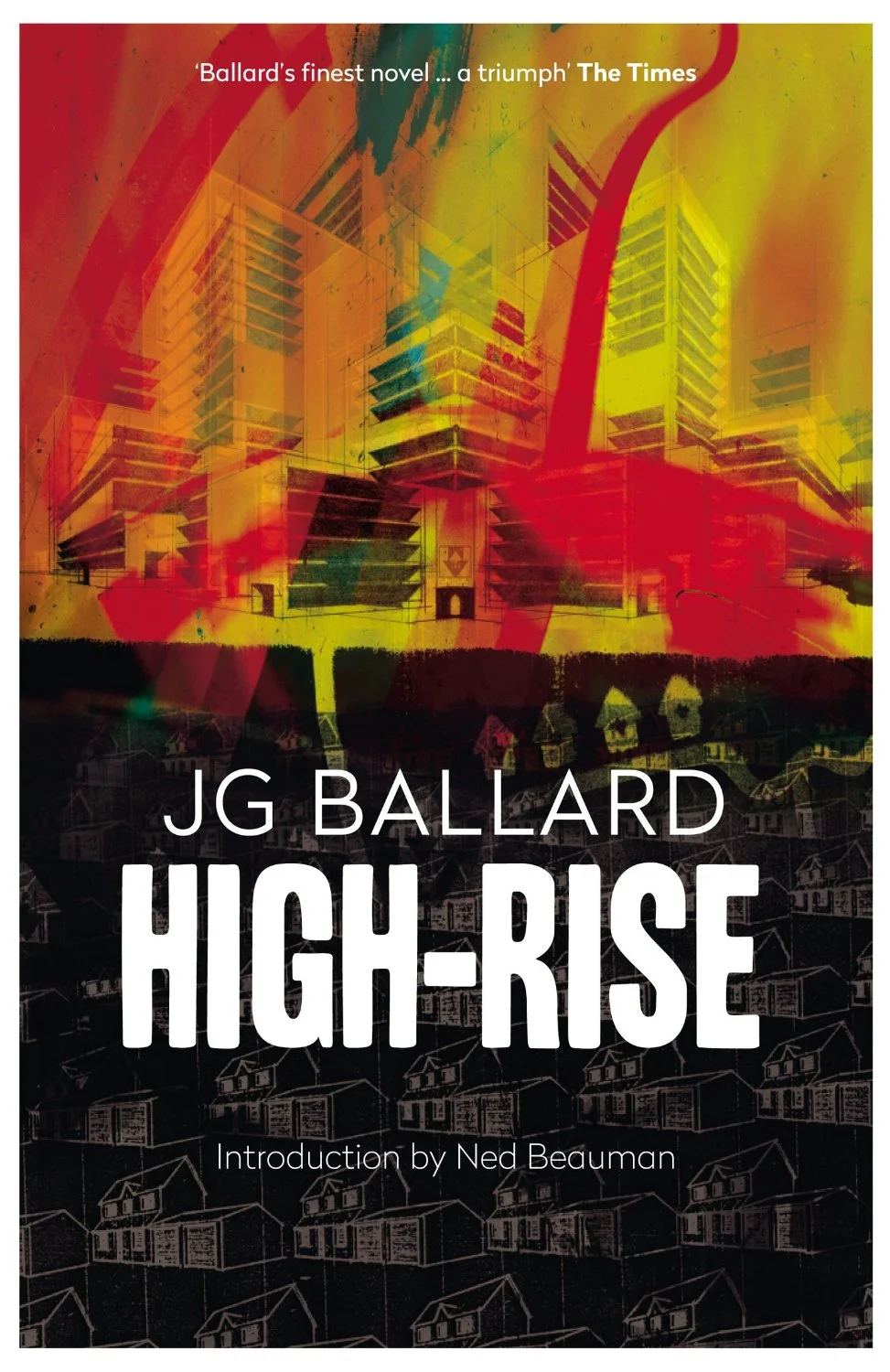High-Rise
BOOK REVIEW
High-Rise – J.G. Ballard
Chilling dystopia portraying a tower residence’s deterioration into a social jungle
First published in the 1970s, Ballard’s prescient High-Rise portrays an immense, self-sustaining residential tower whose occupants symbolize the adjustment to a new way of living: namely, on top of one another and with the option to never leave the building’s shadow thanks to its comprehensive shops and facilities. Reminiscent of the all-inclusive condominiums that engulf Toronto’s skyline, I found the theme germane to my own acclimation to a concrete jungle. Many big-city energies were well captured, with the two-tiered dynamic at parties a memorable example – the superficial professional gossip thinly veiling personal rivalries and palpable scent of one-upmanship.
As foreshadowed early on in the book, the idealistic tapestry of the high-rise rapidly begins to unthread as tenants jostle for facilities and guard elevators for their own floors. This impish behavior fuels a sense of tribalism amongst three different sections of the building, abstractly intended to connote the lower, middle and upper-classes of society. The occasional eruption of violence becomes commonplace as the setting devolves into a state of nature, not dissimilar to Lord of the Flies. By the book’s close the tenants resemble primitive beings, fulfilling their animalistic needs at any cost, with a notable absence of moral opprobrium.
“In the future, violence would clearly become a valuable form of social cohesion.”
Throughout this novel Ballard works hard to maintain the reader’s focus on the high-rise’s social decay, intentionally foregoing in-depth character development by toggling the plot’s spotlight between three characters in separate sections of the high-rise. He accomplishes this objective, and though the pace with which the microcosm spirals out of control is a little startling, one is left pondering on the naturalness of modern urban planning. The readiness of tenants to resort to barbarism, while exaggerated for effect, is paramount to Ballard’s cautionary motif. Separately, Ballard’s creative and playful use of similes sprinkles entertaining imagery throughout the otherwise dejected tone. In sum High-Rise is a powerful read, particularly for anyone who has experienced and grappled with the social kinks of a residential tower. It also serves as strong support for the author’s reputation as a dystopian writer, a talent I certainly intend to explore further through his other works.
-NP, January 2016
